Stories in Part 8:
Another Killer Freed
George Leport
'Curly' Marshall
Irvin Keefer
Willis Brookes
Taneka Washington
Charles Jackson
Debbie Taylor, Children
Louise Davis
William Ruffin
John 'Jocke' Veney
Dr. William Sulkes
Terry Weaver
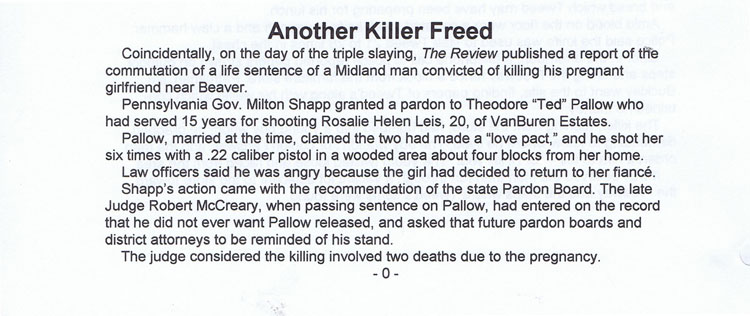
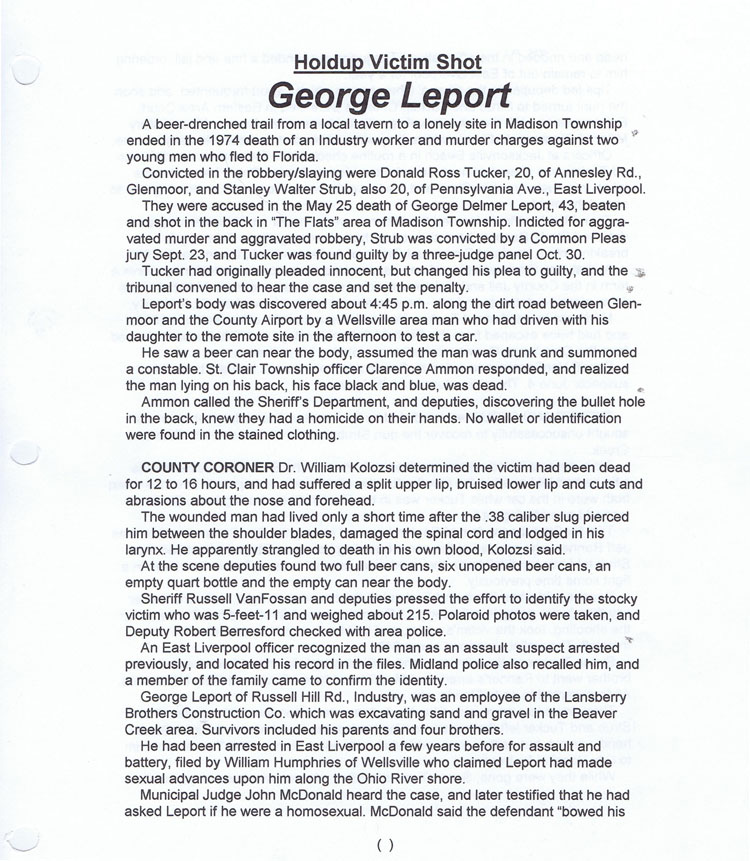
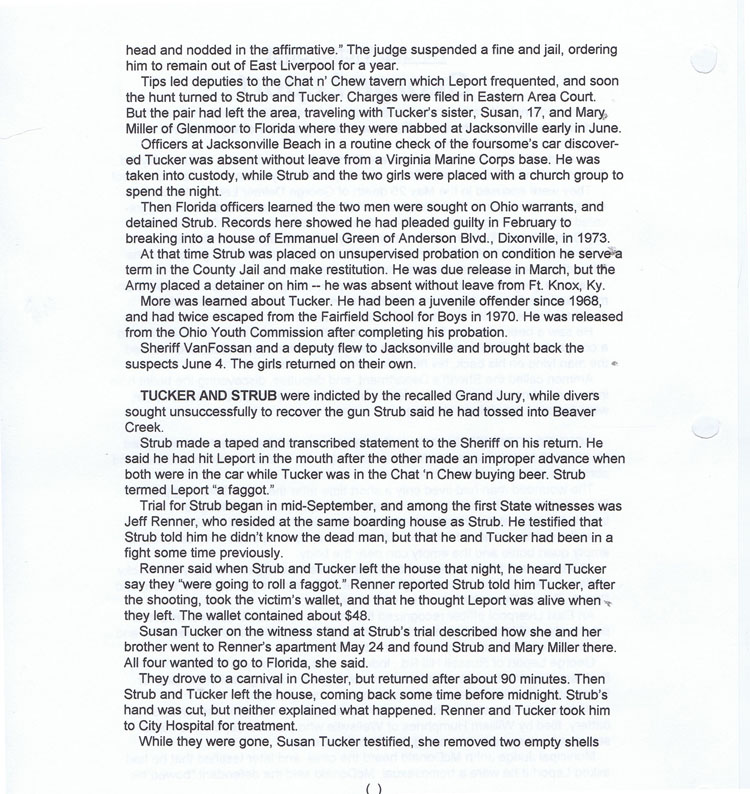
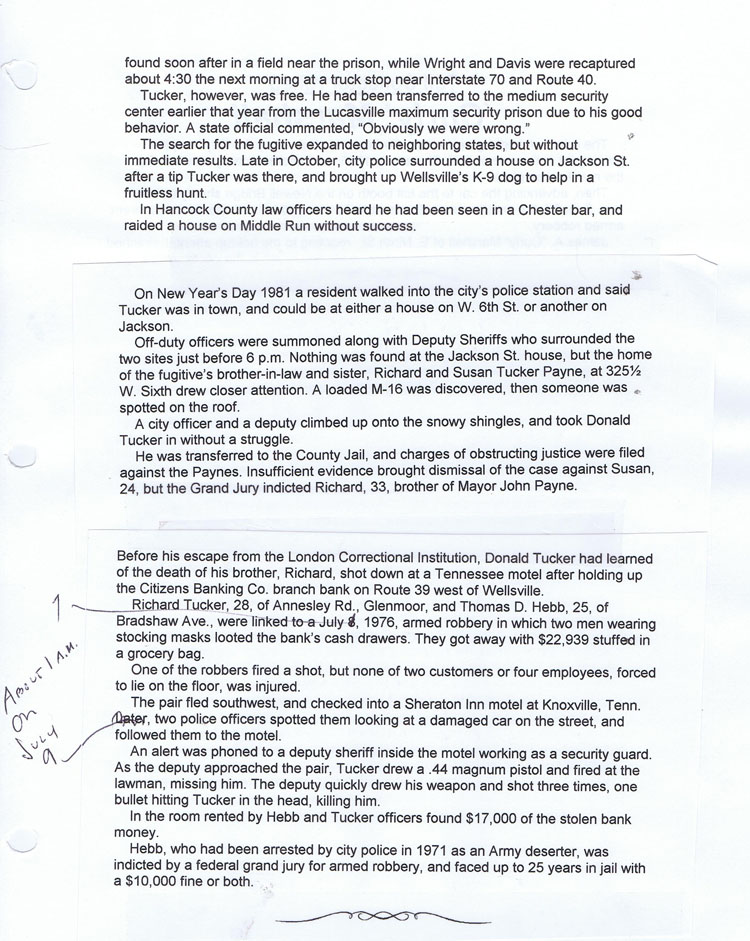
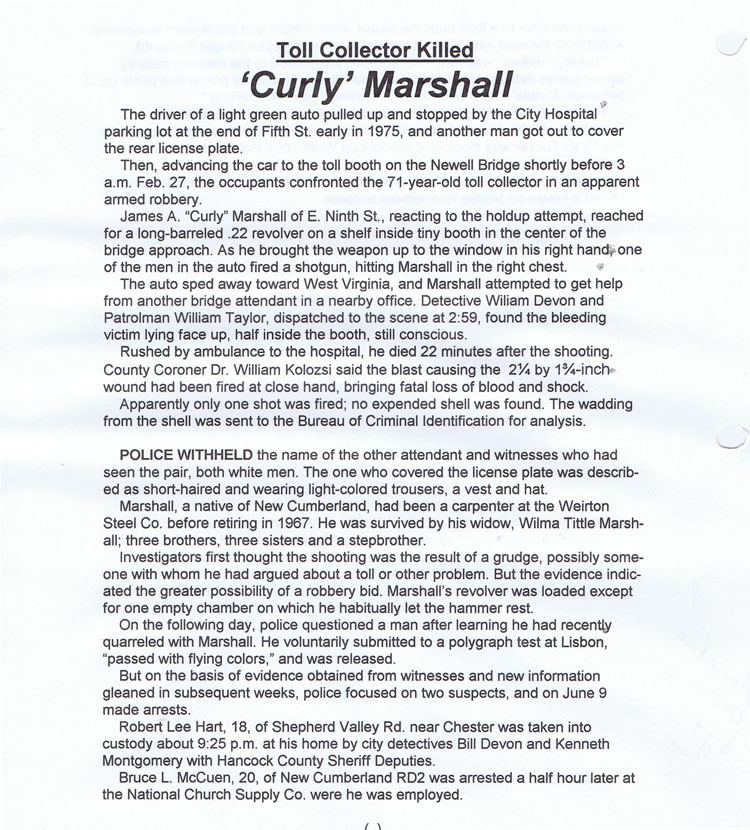
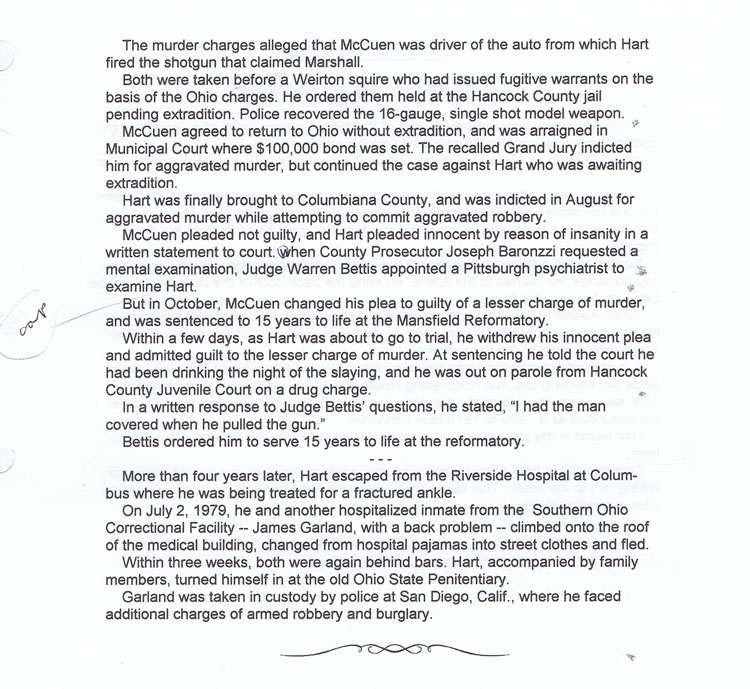
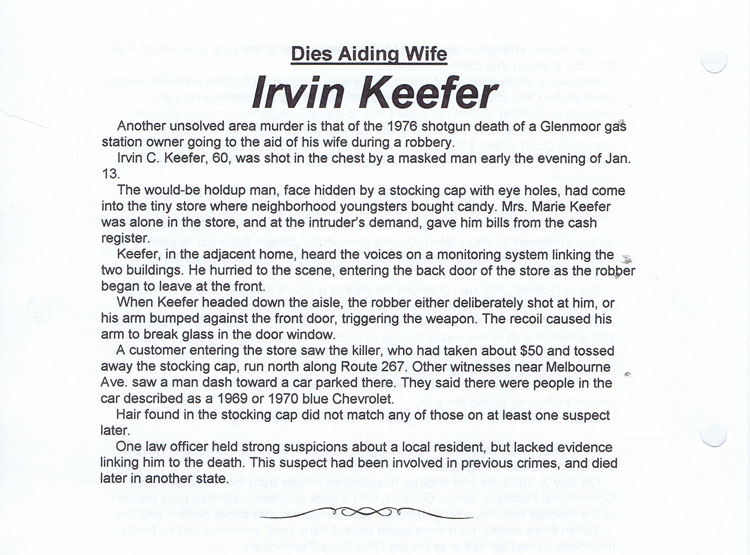
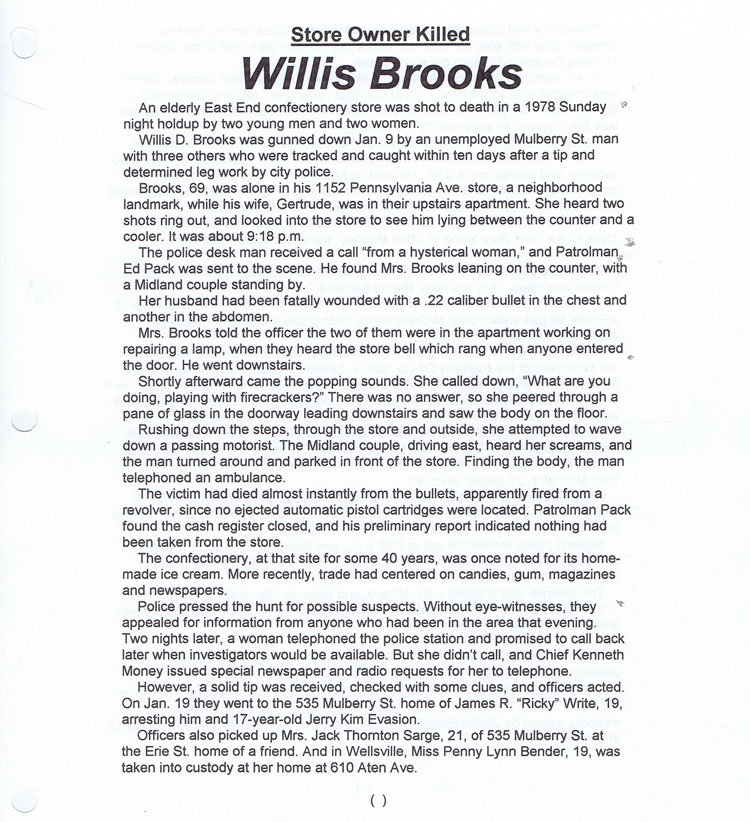
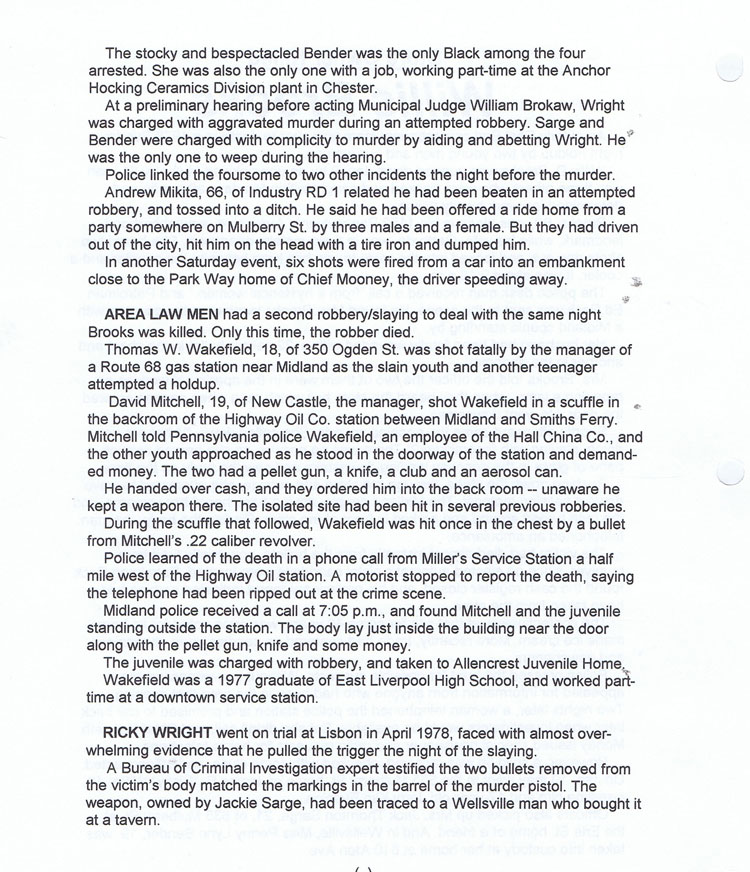
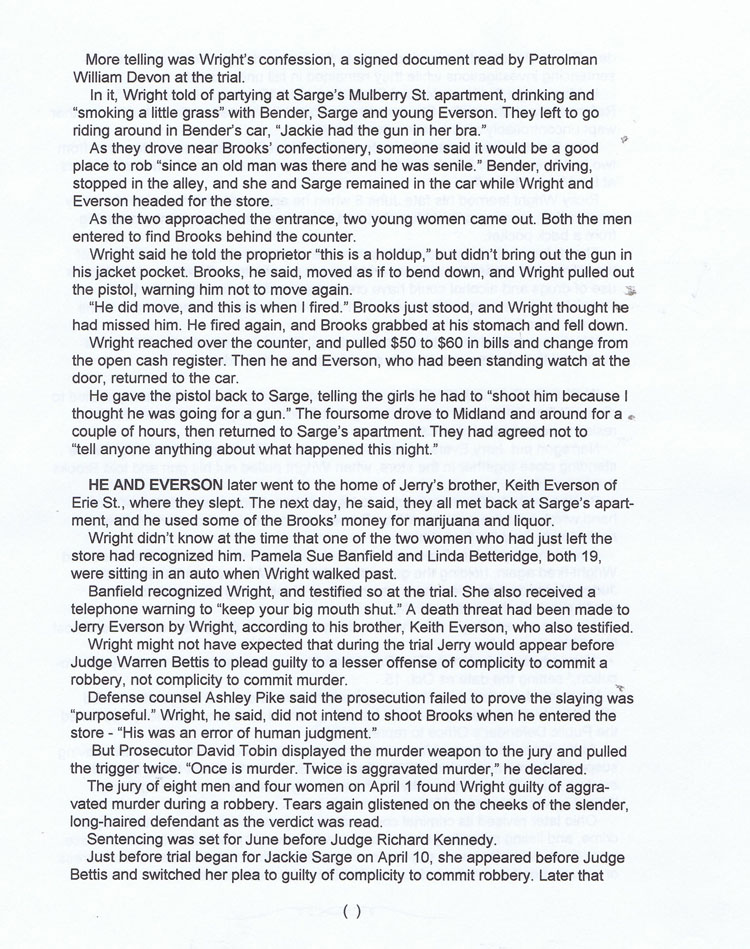
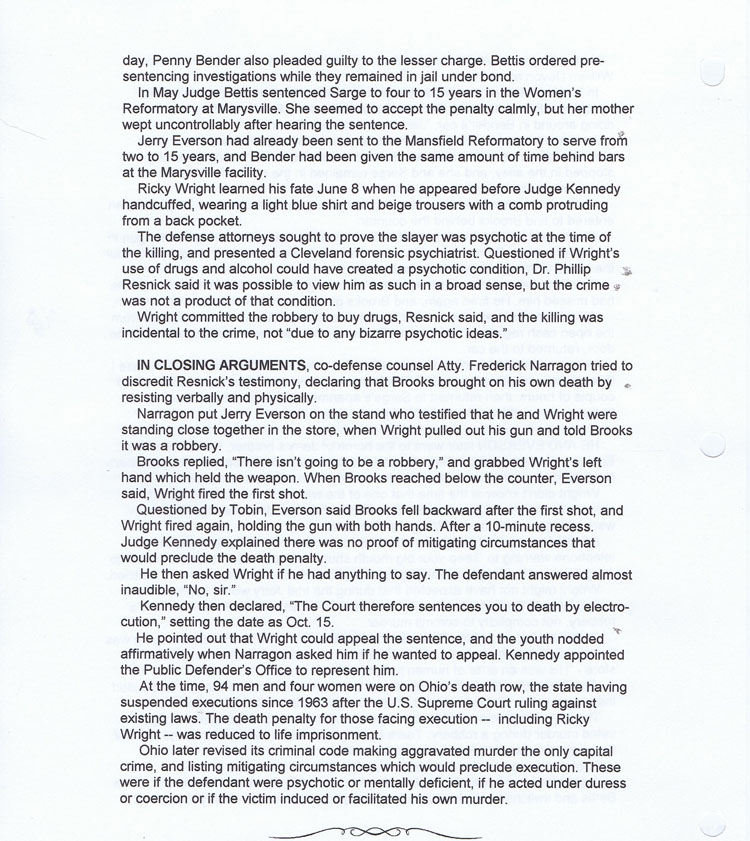
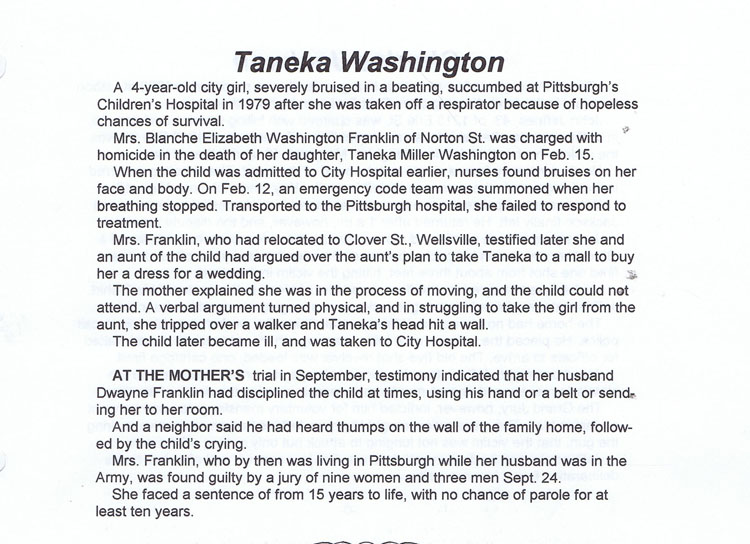
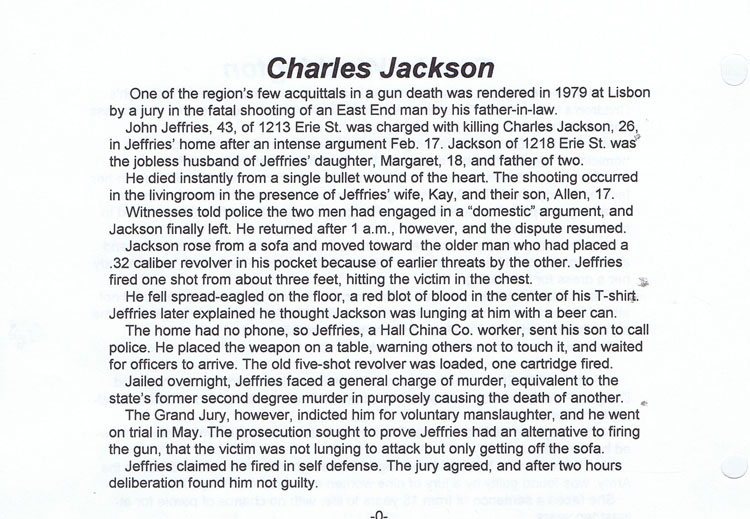
Debbie Taylor, Children
The city was shocked again late in the 1970s with a second triple murder -- a young mother and her small son and daughter were cruelly bludgeoned to death in their bedrooms.
Mrs. Deborah Davis Taylor, 21, and the children were found battered and blood- covered the morning of June 26, 1979, in their old brown-shingled home at West Eighth St. and Woodland Ave.
An infant boy, about 1, was found safe in a crib in his mother's bedroom.
The scene was near Dresden Ave. where in 1973 Earl Tweed, Mrs. Linda Morris, 22, and her daughter Angela, 4, were slain in Tweed's furniture store. And most of the police officers were the same who investigated the killings six year previous.
The bodies were discovered about 10:40 a.m. by Robert "Bobby" Davis of Alpha St., father of Mrs. Taylor, along with James Davis, 14, her brother, and Robert Wooten, her brother-in-law.
They had gone to the home to learn why the young mother did not answer repeated telephone calls. Mrs. Taylor, partially clad, lay face up on the floor near her bed. Her upper body was clad in a blue and white striped garment. She was wearing stockings.
The bed was mussed, as if someone had lain on it, but the covers were not pulled back for sleeping. There were some signs of a struggle, but no furniture had been disturbed. Mrs. Taylor's purse was missing.
THE BOY, JESSE, 5, and girl, Billie Jo, 3, were in their night clothes in a room adjacent to their mother's, apparently killed in their sleep. First indications were that all had been dead five or six hours.
"The person who did this had to be sick," a veteran law officer said. After a preliminary examination of the crime scene, Dr. William Kolozsi, County Coroner, commented, "This was a ghastly killing."
The physician said a "bludgeon-type weapon" had been used, and examination indicated Mrs. Taylor "had an altercation with her assailant."
The young mother was a student at the CGS Academy of Cosmetology on Walnut St., and had been in classes the day before. She and her former husband, Kenneth Ray Taylor, obtained a marriage dissolution only a month or so before.
The little family lived in a ground floor apartment of the large house facing Woodlawn Ave. The former private residence housed other apartments, most empty except for first floor rooms occupied by an uncle, Arlie Davis.
Taylor's front door faced Woodlawn, but was closed off inside, and she used a doorway onto a porch overlooking W. Eighth St.
First to notify police about the slayings was Robert Wooten of Alpha St., brother- in-law of the victim. He telephoned at 10:40 a.m. reporting "a dead woman and two children in the home at 760 Woodlawn."
Detective William Devon, manning the police headquarters desk, received a second call about the deaths moments later from an unidentified man, believed to be Bobby Davis. Devon dispatched Patrolman Victor Wolfe who arrived at the scene at 10:44.
Wolfe found the father and young James Davis standing in the kitchen. "They're all dead," Bobby Davis said. Only the bathroom light was on. The surviving baby, Kenneth, was taken by Bobby Davis to another daughter, Mrs. Delores Kwasnik of Almont St.
Wooten later told officers he had gone to the home to pay Mrs. Taylor $5 he owed. He said he knocked on the door but received no answer although he heard the baby crying.
He went to a Holliday St. home about 10:30, and told her father who said he was certain Debbie was home. They telephoned again, then drove directly to the Woodlawn Ave. apartment.
Using a key to enter, Bobby Davis came upon what Review reporter Bob Popp described as "a carnival of gore." Davis went into the dark bedroom and turned on a lamp. The light streamed across Debbie's legs, and he knew she was dead.
He then went into the children's room, and pulled down the blanket to find their blood-covered forms. "Call the police," he told Wooten, who then telephoned from the front room.
"Let's get out of here," he said to Wooten, "and not touch anything until the police arrive."
Police began combing a four-block area of the neighborhood for the murder weapon, possibly a hammer. Officers also gathered information about the victims. Parked outside was a car which Melbourne Feltrop of the Travelers Hotel said he had loaned Mrs. Taylor the night before.
IN THE CROWD of onlookers around the house was a friend of Mrs. Taylor who said he saw her in a downtown food market about 10:30 buying diapers for the baby. She told him she had been to a bingo game earlier at St. Aloysious Church, and a baby-sitter was in the apartment.
Kenneth, the ex-husband, arrived at the police station the next day after a 36- hour drive from his home in Killeen, Tex. With him was Wyman Davis, a brother of Debbie, who was in Killeen.
Police checked a possible connection with a triple slaying at Kenova, W. Va., the day before when a young divorcee and her three children were beaten to death.
Det. Devon directed the assembling of clues and the search for a suspect, with the assistance of a battery of city officers and agents of the Ohio Bureau of Criminal Investigation.
The deaths boosted to eight the number of murders in East Liverpool in 16 months. They included a robbery-slaying of an East End store owner, a man shot in a parking lot on Bradshaw Ave., another man shot on Smith St., a man shot by a relative in the East End and the death of an infant. All were solved.
Autopsies placed a new perspective on the Taylor deaths. The victims were killed between midnight and I a.m., earlier than first believed.
Death was caused by multiple fractures of the head and face, and there were multiple cuts and bruises. Kolozsi reported Debbie had put up a struggle as evidenced from a bruise on the left wrist and finger marks on the left shoulder.
The children had died from multiple skull fractures on the right side of their faces and heads, caused by a "blunt instrument."
Now the investigation focused on the earlier time period -- after Debbie came home between 11:30 and 11:45 according to the baby-sitter and before 1 a.m. Discrepancies in three statements brought into focus a prime suspect. By Friday evening investigators were again questioning Robert Wooten and two others.
Originally, Wooten said he had worked the 3 to 11 p.m. shift at Crucible Steel Divisions of Colt Industries at Midland. On the way home he stopped at the Harker Cafe in the East End for cigarettes, arriving home near 11:30 p.m.
Then he said he went downtown to buy a six-pack of beer. Raymond Peachey, a friend, was at the home with two other Davis relatives. Peachey told police Wooten did not get home from work until 12:45.
Wooten had been married to Darla, Debbie's sister, for about two years. He was the father of two children -- one 2, the other nine months. His wife was out of town.
Devon became convinced he had narrowed the hunt to one suspect. About 1:30 Saturday morning, the detective went to Wooten's home, and asked him to return to City Hall for another review of his statements. After about an hour's questioning, Wooten admitted he had killed all three.
"Start at the beginning," Devon said, and they went over the missing details with Patrolman Norman Curtis standing by. Wooten confessed he had battered the victims with a piece of pipe, about two feet long, which he had found in the kitchen.
The long-haired, mustachioed Wooten began giving a formal statement around 3 a.m. He signed each of the 41/2 pages by 4:19 a.m., then was taken to a cell.
TAKEN AT 9;30 A.M. before Municipal Judge John McDonald, he was placed under $100,000 bond. Lacking the money, he was jailed to await arraignment. Police started hearing of death threats against the prisoner, and the Judge ordered body searches of everyone who showed up for the preliminary hearing July 5.
McDonald allowed no standees, so only about 36 people sat to hear testimony from police officers, Dr. Kolozsi, Bobby Davis and other witnesses. At the conclusion, the judge ordered the suspect held for the County Grand Jury.
At the Aug. 2 session of the Grand Jury, Wooten was indicted on two counts of aggravated murder of the two children and murder of their mother. Prosecutor David Tobin explained there was no indication of "prior calculation" in the death of Mrs. Taylor -- it was more spur of the moment crime.
Wooten went on trial in November before Judge Warren Bettis, and the signed confession played a major role in the State's case.
Despite opposition from defense counsel Robert Roberts, Wooten's confession was admitted into evidence, read by Detective Devon. The defendant said he had been in the Village Green that night, and Debbie came in with the baby. She left shortly, and he walked later to her house, asking help in jump starting his car.
She said her battery was too weak, to call someone else. He tried to reach Bobby Davis without success. He sat while she walked around cleaning the room. "I asked her to go to bed with me." He repeated the question, and "she started slapping me and pulling my hair, and told me to leave her alone."
"I went into the kitchen and got a bar I seen when I came into the house." He said he warned her not to hit him again, and when she shoved him, and walked away, "I hit her on the back of the head."
He said she fell to her side and rolled over on her back." When the two children came out of their bedroom, he told them to go back -- "that me and mommy were playing a game."
He said he looked at her for a while, and ripped off her slip, saying he should rape her. She told him she was bleeding, and he said he apologized for hitting, would take her to the hospital. He said he put one foot in the middle of her body, and reached down to pick her up. "This is when she kicked me in the groin, and it bent me over."
"I went crazy, and hit her three more times in the face." The little girl started to scream, and told her to shut up. She kept on, Wooten said, and he got scared. "Then I struck her once in the head with the pipe."
"Then Jesse started to get up, and I hit him in the head with the pipe." He dropped the pipe and walked into the living room and sat down for a while. He said he thought about what he should do -- leave or call the cops. "Then I thought about my family, and decided to leave."
He said he wrapped the pipe in Debbie's slip, and drove around, finally throwing into the river along River Rd.
Another Prosecution witness was Patrolman Virgil Williams who testified to overhearing a jail conversation between Wooten and his mother in which the suspect admitted the killings.
WOOTEN TOOK the stand, and denied he had killed any of the three. He admitted confessing to Devon before his arrest, but said he just wanted to get out of the room. He said the detective refused to let him go out for a beer, and made other promises he did not keep.
The defendant also denied telling his mother of his guilt, saying he did not recall the officer bringing his mother to his cell.
The jury took only two hours to return a verdict of guilty in the murder of Debbie and aggravated murder of his niece and nephew. Members of the panel said the only reason deliberations took that long was discussion centering on aggravated murder which involves prior calculation.
Asked if he wished to speak before sentencing, Wooten told Judge Bettis, "Yes, but I'd better not say it." The Judge told him this was his last chance if he had anything to say.
Wooten said, "I feel this court was prejudiced from the beginning. You yourself already had an opinion on the trial -- everything that happened in this court was a bunch of B.S."
Bettis made no reply, but ordered him to serve two life sentences. He had earlier noted that he could not order an execution because the Ohio legislature had not passed a new death penalty provision since the U.S. Supreme Court found the law unconstitutional.
The judge ordered a deputy to "take this man out of here." He turned to Wooten and declared, "You are the most despicable man I have ever met in my life." Wooten answered, "You ain't so hot yourself."
Detective Devon Commended
Devon, on the force for some 20 years, received praise from Police Chief Kenneth Mooney and Mayor H.A. Tullis for his hard work and skillful handling of the case. Devon -- according to his wife -- had slept only 12 hours in the four days after Wooten's call came to him.
The generally affable detective was smiles again as he looked at the bureau office blackboard listing the eight city murders since Feb. 8, 1978.
Alongside each of the last three victim's names was written "Cleared."
Missing Girl Killed?
Louise Davis
Robert Wooten was linked to the 1979 disappearance and possible murder of a teen-aged Dixonville girl whose fate remains unknown for her family and area law agencies.
Evelyn Louise Davis, 17, was sunbathing in her backyard June 21 when someone she knew asked her to accompany him to meet a friend of hers. She was never seen or heard from again.
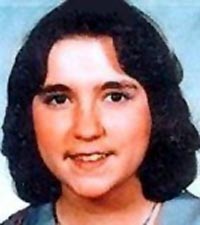
The incident was first treated as a routine runaway, but an anonymous letter sent to county officials a year afterward turned authorities to different suspicions.
The writer claimed the girl was slain by the man she was last seen with, and provided information which led law officers to finding the girl's clothes hidden in the Alpha St. home of one of the suspect's relatives and where he once resided.
That suspect was reported to be serving three life sentences for a triple homicide for which he was arrested two weeks after Louise's disappearance.
THE DESCRIPTION FIT Robert Wooten convicted in the bludgeon deaths of Deborah Davis Taylor and her two children June 26, 1979, in their W. Eighth St. home. He is serving three consecutive life sentences for the killings.
The late Mayor William Devon was a city detective when Louise Davis was first reported missing, and he verified Wooten was reported the man last seen with Louise at the Stop and Go store on Pennsylvania Ave.
Devon, who had obtained a confession from Wooten in the triple Taylor murders, was among those who searched the East End home after the anonymous letter was received in 1980.
The law men hunted through the basement of the home, and found tucked in corner rafters a brown bag containing articles of clothing. The items included a bikini bottom, small tank top and a pair of jeans. "Right at that moment I knew she was dead, and I was positive who did it," Devon recalled.
"The jeans really stuck out in my mind," Devon said, "because they had some sort of red design on the pockets. I remembered from reports that the jeans Louise Davis was wearing had a red design. Her parents later identified the clothes, but I already knew they were hers. My God, I knew."
With this discovery, police obtained a team of bloodhounds and tracked them around the house which was surrounded by woods. Devon said about ten officers with shovels followed the dogs up into the woods, searching and digging eight hours a day for three days without finding anything. But he noted that the dogs always went in the same direction -- straight up over the hill.
Then on July 4, 1980, Devon went to the prison and talked with Wooten. The detective thought he would spend only an hour or so trying to get the prisoner to cooperate, to confirm Louise's fate and ease the anxiety of her family, "to find this little girl and give her a proper burial."
Instead, Devon talked to him more than eight hours, hoping for a break. The detective said the suspect admitted knowing Louise, but was not responsible for her disappearance. As Devon left, Wooten told him he would "think about" the situation and meet him in a couple of weeks.
But a few days before the expected visit, Devon received a call from a prison official relaying a message from the prisoner that he did not want to see the detective, that a trip would be worthless.
This is the text of the double-spaced, typewritten letter to David Tobin, then county Prosecutor: Law officers requested deletion of specific names:
I am writing you concerning Louise Davis. I know where you can find her or should say her BODY. . . / can also prove that (name deleted) did it.
First of all let me give you some proof that I do know what I am telling you.
If you would go to (name deleted) house in East End and go into the celler and go to the far corner of the house under their new kitchen I believe, and in the very corner there is a space between the floor and the wall and in that space you will find the clothes Louise was wearing the day she was last seen and all you have to do is take these clothes to Louises house and see if her family recognizes them. I'M sure that they will.
After you do that and you know for sure that the clothes were the ones she was wearing when she disappeared, then maybe you will know that I am telling you the truth. Buried with the body is a reddish brown purse with fairly long carrying straps.
If you want to know the location of the body then you have to do as t say.. Bring (name deleted) back to the 'county jail,' 3 days after you bring him back you will either have the location of the body or the body itself.
What I want is a chance to kill (name deleted). Another thing to prove I am real is that I tried to get in to see (name deleted) when he was at the east liverpool jail but I would not give my name to a tall blonde-haired guy so he would not let me see him.
I think that I have told you enough for you to know I am telling the truth so do as I say and you will get the body and the proof you need to convict (name deleted) IF he lives that long..
Just so you'll know how i know all this, at one time me and (name deleted) were pretty good friends and then he had to go and kill (name deleted) and her kids if he did kill them. He was convicted so I have to believe that he did do it so know / have to do some thing about it.
(Name deleted) is not alive SO WHY SHOULD (name deleted) BE ALIVE . . . Is this what you people call law? I don't want to hear anything about this until after you bring (name deleted) back because if I do hear anything then won't do anything and you will never find the body . . . PERIOD.
GLAD TO BE OF SERVICE
A FRIEND
News reports about the letter and missing girl were published nationwide via the Associated Press, and some readers in the Warren area notified the Warren Tribune-Chronicle of the similarity of the young woman to description of a corpse discovered in1989 near that city.
A reconstructed likeness had appeared in the Tribune-Chronicle, and on the basis of this possible link, dental records of both were compared. However, examination revealed no confirming identification.
Early in 1997 the Davis family viewed a television talk show featuring a California psychic with a reputation for locating loved ones missing from their families.
Rachel Davis and Barb Davis, sister and cousin of the missing girl, contacted the psychic, Sylvia Brown, and eventually met with her in January at New York where she had appeared on the Montel Williams show.
Brown first indicated Louise was in a wooded area of the East End. Later she gave a more detailed description of the possible location of the body. The site, she said, was on a hill, and the victim in a deep hole, possibly a well, covered by railroad ties.
BROWN ALSO provided information she could not have learned from other sources -- that Louise talked with a slight lisp caused by a bike mishap injury to her mouth.
The psychic told the women Louise had been beaten to death by the killer who had an accomplice.
The two Davises followed Brown's directions, and discovered railroad ties piled over a filled-in hole on a hill site. Removing top layers of the hole revealed water seeping upward.
Sheriff Richard Koffel declined to excavate the site, pointing out his department had its own on-going investigation. He did not rule out digging there in the future.
Koffel said his office arranged for an inspection of the site by an aide from the state Bureau of Mining who reported no old caves or wells underground. Koffel said there is a wet spot where railroad ties were found, but no opening or shaft beneath.
The Sheriff said, "I know they're not happy with us, but that's the way it is. We're not dodging it. We've sent guys to California to pursue this."
On the June 1997 anniversary of Louise's disappearance, the family conducted a rally on Alpha St. to honor her memory and call attention to the need for continuing investigation.
In October 1997 an Alpha St. resident granted permission to the family to dig on his property where the Davises believe Louise's body may be found. The family also launched a "Need to Find" campaign with buttons bearing the girl's photo.
Meanwhile, after 18 years the family continues to hope to learn Louise's fate. "She is at least entitled to a proper funeral."
LOOKING FOR LOUISE DAVIS.wmvhttp://www.youtube.com/watch?v=epFkTZXwWfE
Some Additional Information:
http://www.doenetwork.org/cases/183dfoh.html
Her friend Debbie Taylor:
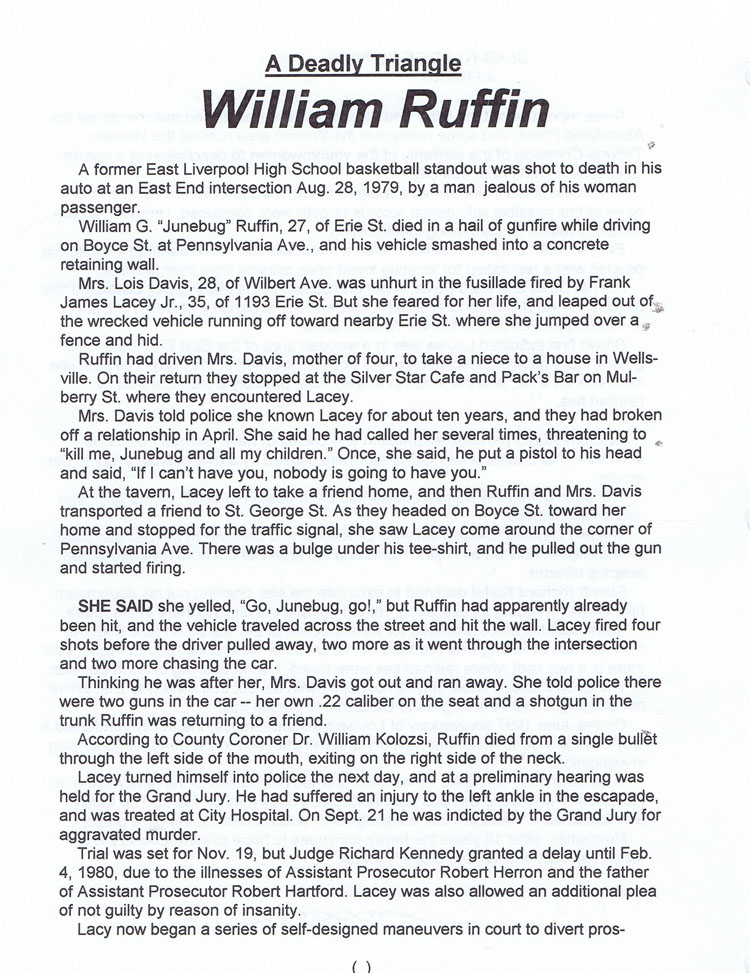
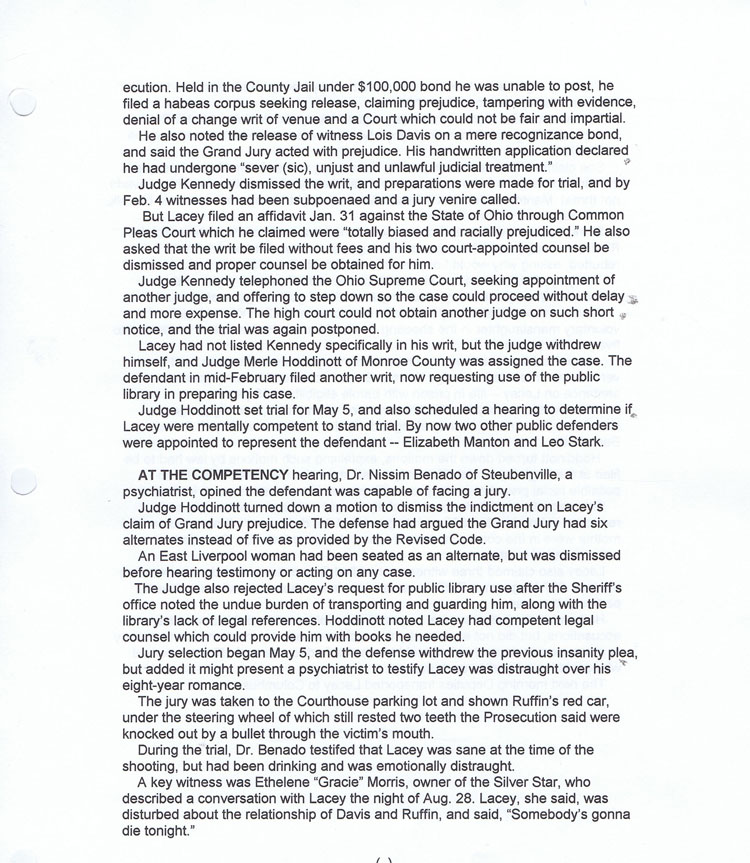
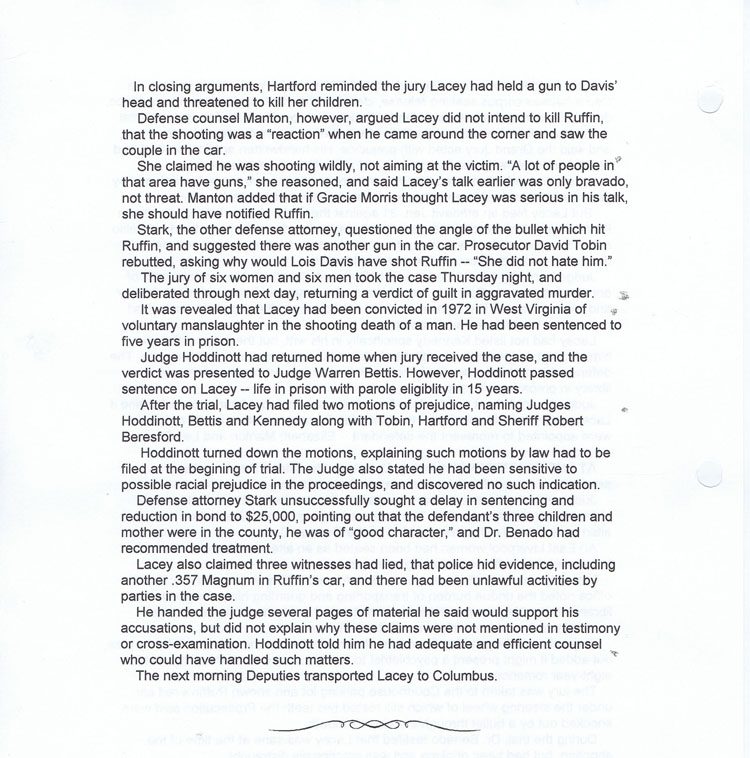
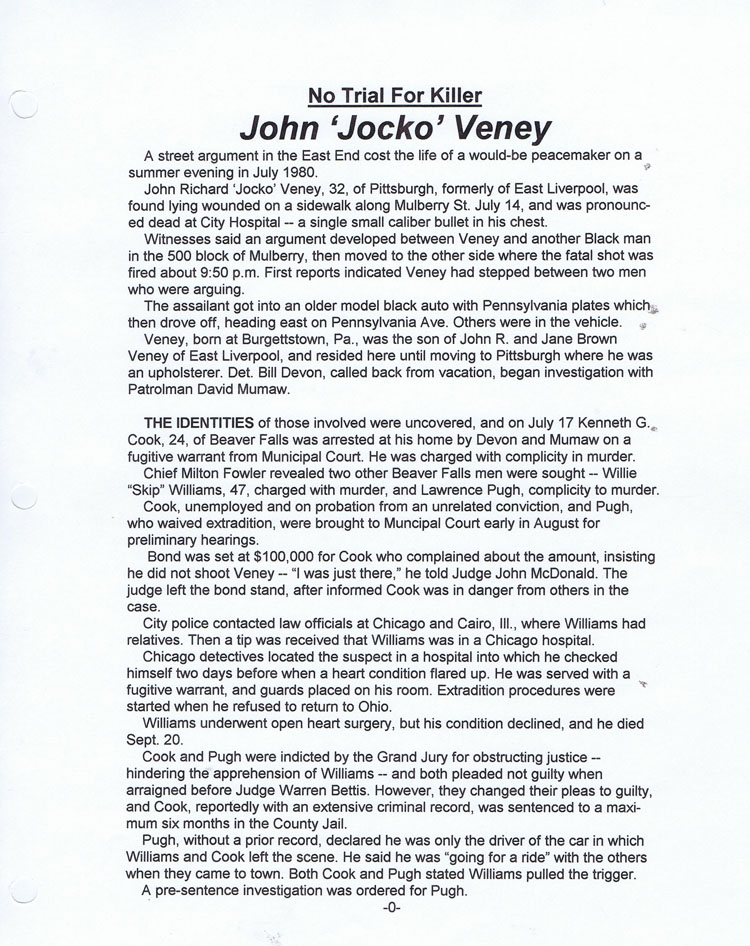
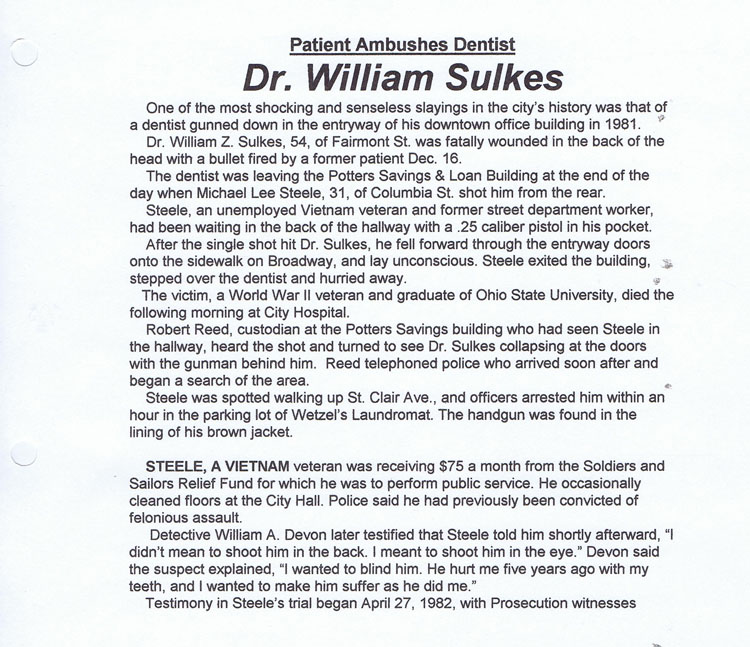
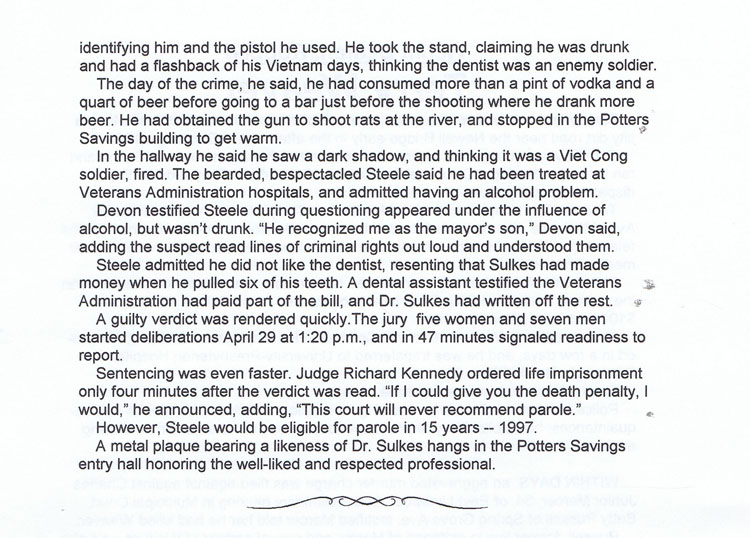
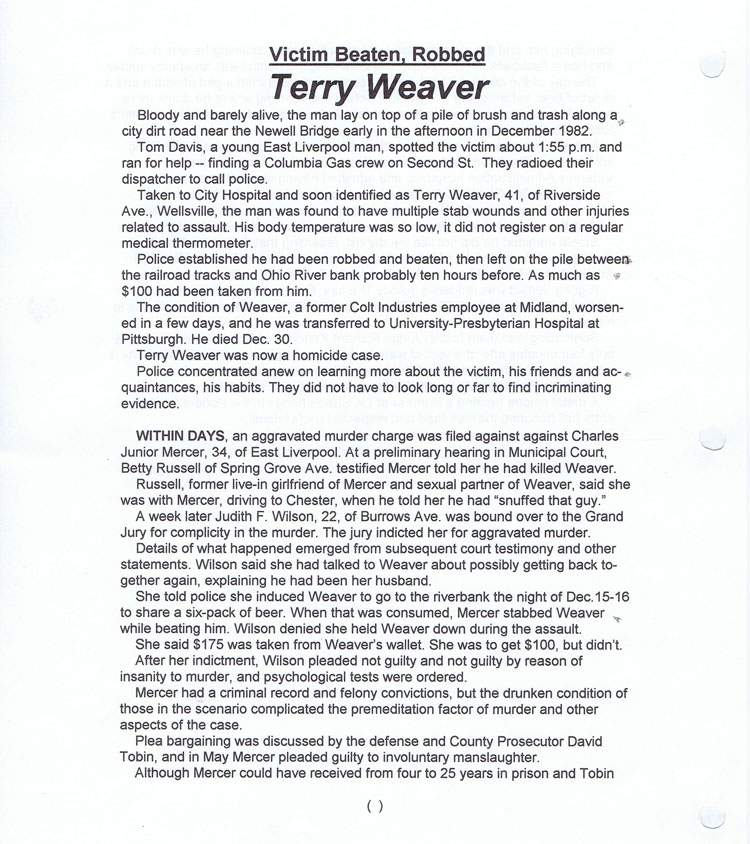
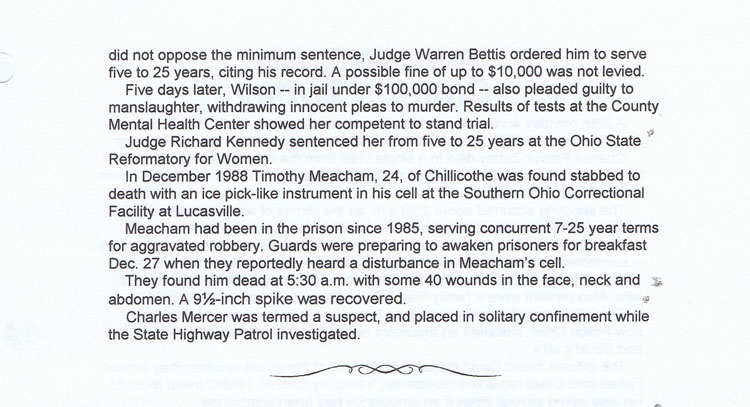
CONTINUE TO Murder Will Out 9
This site is the property of the East Liverpool Historical Society.
Regular linking, i.e. providing the URL of the East Liverpool Historical Society web site for viewers to click on and be taken to the East Liverpool Historical Society entry portal or to any specific article on the website is legally permitted.
Hyperlinking, or as it is also called framing, without permission is not permitted.
Legally speaking framing is still in a murky area of the law though there have been court cases in which framing has been seen as violation of copyright law. Many cases that were taken to court ended up settling out-of-court with the one doing the framing agreeing to cease framing and to just use a regular link to the other site.
The East Liverpool Historical Society pays fees to keep their site online. A person framing the Society site is effectively presenting the entire East Liverpool Historical Society web site as his own site and doing it at no cost to himself, i.e. stealing the site.
The East Liverpool Historical Society reserves the right to charge such an individual a fee for the use of the Society’s material.